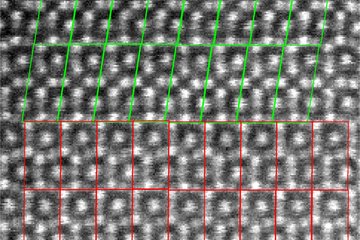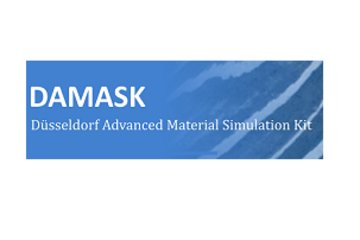All genres
41.
Journal Article
Interfaces and defect composition at the near-atomic scale through atom probe tomography investigations. Journal of Materials Research 33 (23), pp. 4018 - 4030 (2018)
42.
Proceedings
Microstructure And Mechanical Properties Of Additively Manufactured Pearl® Micro AD730®. World PM 2022 Congress and Exhibition, Code 188680, Lyon, France, October 09, 2022 - October 13, 2022. (2022)
43.
Conference Paper
Is the Carbon Content Really an Issue for the LCF Durability of Forged γ/γ′ Ni-Based Disk Alloys? In: The Minerals, Metals & Materials Series, pp. 591 - 602. The 14th International Symposium on Superalloys
, Seven Springs, PA, USA, September 12, 2021 - September 16, 2021. (2020)
44.
Conference Paper
Segregation of Solutes at Dislocations: A New Alloy Design Parameter for Advanced Superalloys. In: The Minerals, Metals & Materials Series, pp. 41 - 51. The 14th International Symposium on Superalloys
, Seven Springs , PA, USA, September 12, 2021 - September 16, 2021. (2020)
45.
Conference Paper
Platinum-Containing New Generation Nickel-Based Superalloy for Single Crystalline Applications. In: The Minerals, Metals & Materials Series, pp. 71 - 81. The 14th International Symposium on Superalloys
, Seven Springs, PA, USA, September 12, 2021 - September 16, 2021. (2020)
46.
Conference Paper
Deformation of Borides in Nickel-based Superalloys: a Study of Segregation at Dislocations. M & M 2019 - Microscopy & Microanalysis, Portland, OR, USA, August 04, 2019 - August 08, 2019. Microscopy and Microanalysis 25, S2 Ed., pp. 2538 - 2539 (2019)
47.
Talk
A Machine Learning based Workflows to Quantify Atom Probe Tomography Data. Workshop "Frontiers of APT Physics, Data Processing, Analysis and Reconstruction“, Arlington, VA, USA (2024)
48.
Talk
Gamma channel width dependent compositional evolution in multi-component superalloys. Eurosuperalloys 2022, Bamberg, Germany (2022)
49.
Talk
Structure, chemistry and thermodynamics of Lattice Defects. Colloquium of the Department of Materials Science and Engineering, Ohio State Universitry, online, Columbus, OH, USA (2021)
50.
Talk
Development of superalloys driven by atomic-scale interactions of solutes with crystal defects. TMS 2021 Annual Meeting & Exhibition, online, Pittsburgh, PA, USA (2021)
51.
Talk
Chemistry and Structure at Lattice Defects studied at the Atomic Scale. 4th Symposium Core Research Cluster Materials Science & 3rd Symposium on International Joint Graduate Program in Materials Science, Tohoku University, online, Tohoku, Japan (2020)
52.
Talk
On the Formation of Heating and Cooling Precipitates from a Superalloy Powder. TMS 2020 Annual Meeting & Exhibition, San Diego, CA, USA (2020)
53.
Talk
Oxygen, α2, Macrozones and Dwell Fatigue Initiation in α-Ti. TMS 2020 Annual Meeting & Exhibition, San Diego, CA, USA (2020)
54.
Talk
Stress Corrosion Cracking Assisted by Oxygen Embrittlement in Ti-6246. TMS 2020 Annual Meeting & Exhibition, San Diego, CA, USA (2020)
55.
Talk
Understanding deformation mechanisms in superalloys through systematic atomic scale microanalysis. Journées Annuelles SF2M 2019, Paris, France (2019)
56.
Talk
Chemistry at Lattice Defects Probed at Atomic Scale. 20th International Union of Materials Research Societies International Conference in Asia IUMRS, Perth, Australia (2019)
57.
Talk
The effect of segregation of solutes at crystal defects on the mechanical performance of superalloys. 10th Pacific Rim International Conference on Advance Materials and Processing (PRICM-10), Xi'an, China (2019)
58.
Talk
Chemistry at Lattice Defects Probed at Atomic Scale. The 53rd Annual Meeting of the Israel Society for Microscopy, Tel Aviv, Israel, Tel Aviv, Israel (2019)
59.
Talk
Interaction of Chemistry and Structure at Lattice Defects at Atomic Scale. Russell Berrie Nanotechnology Institute, Technion, Haifa, Israel, Haifa, Israel (2019)
60.
Talk
Atomic scale analysis of grain boundary deuteride growth front in Zircaloy-4. TMS 2019 Annual Meeting and Exhibition, San Antonio, TX, USA (2019)











